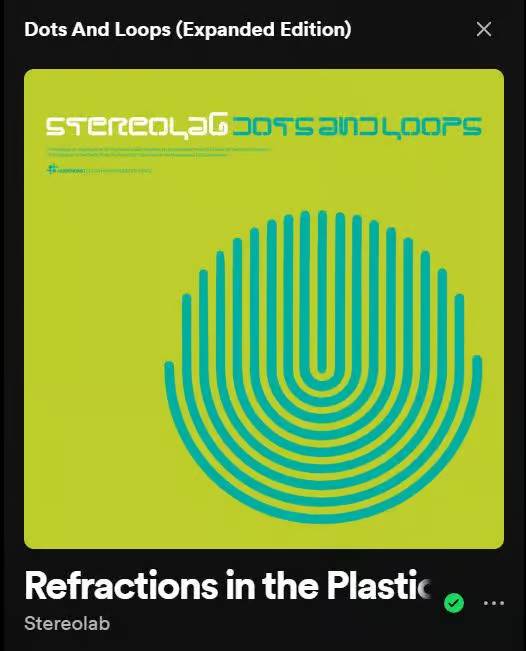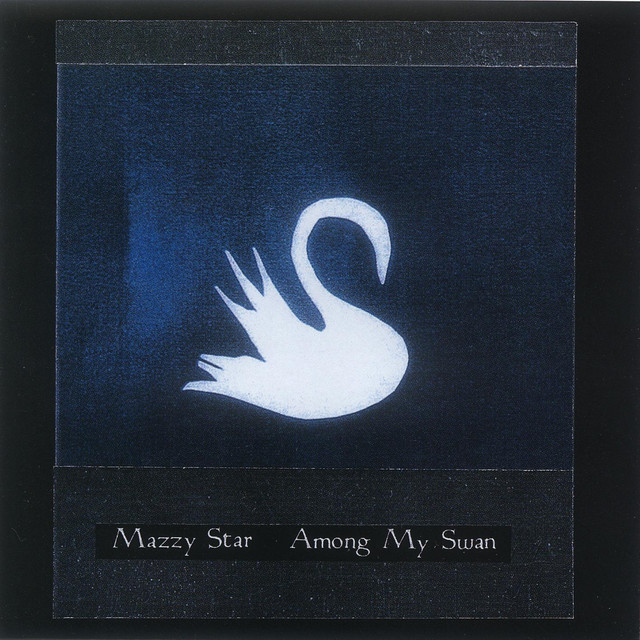Take Me to Church
Stats for “Take Me to Church” by Hozier
Artist: Hozier
Album: Hozier
Released: 2013
Genre: Alternative
Length: 4:02
Certification: 3x Platinum (RIAA)
- Take Me to Church Composition by Hozier: An Outline
- Key and Pitch
- Instruments, Effects, and Vocals
- Song Composition: “Take Me to Church”
- Lyrical Structure and Subject
- Rhyme Pattern
- Key of the Lyrics
- Singing Rhythmic Patterns
- Storytelling in the Lyrics
- Simple Explanation of the Story
- Take Me to Church by Hozier (2013)
- Take Me to Church – Chord Progression
- Genre of “Take Me to Church”
- Founding of Indie Rock
- Hozier’s Impact
- Contemporaries
- Similar Songs
- Genre Comparison
- Contrast with Unrelated Genre
- Encoded Clue
- Analysis of “Take Me to Church” by Hozier
- Conclusion
- Recording Quality/Production
- Techniques Used in Recording
- Mixing and Mastering
- Effects Processing
- Special Equipment
- Effects Pedals and Processors
- Creators of “Take Me to Church”
- Inspiration for Other Creators
- Take Me to Church: An Inner Conflict
- Popular Links about “Take Me to Church” by Hozier

Take Me to Church Composition by Hozier: An Outline
1. General Information
- Performed by: Andrew Hozier-Byrne (Hozier)
- Release Date: September 13, 2013
- Genre: Soul, Blues
- Album: Hozier (2014)
2. Song Composition
- Song structure: Intro – Verse 1 – Pre-chorus – Chorus – Verse 2 – Pre-Chorus – Chorus – Bridge – Chorus
- Key: E minor
- Tempo: 63 beats per minute
- Song length: 4 minutes and 02 seconds
3. Lyrics and Themes
- Main theme: Critique of organized religion, sexuality
- Lyrical style: Symbolic, metaphorical
- Noteworthy lyrics: “I’ll worship like a dog at the shrine of your lies”
4. Music Video
- Director: Brendan Canty and Conal Thomson
- Themes: Love, prejudice, violence
- Concept: Depicts a same-sex relationship and the violent backlash they face
5. Reception and Impact
- Chart performance: Reached number 2 on the Billboard Hot 100
- Awards: Won 2015 Billboard Music Award for Top Rock Song
- Critical reception: Widely praised for its bold themes and unique sound
Key and Pitch
The song “Take Me to Church” by Hozier is in the key of E minor.
Instruments, Effects, and Vocals
Main Instrument: Piano and guitar. Style: Bluesy rock ballad.
Unique Elements
- Guitar: Warm, resonant sound that drives the song.
- Drums: Deep, slow beats creating dramatic tension.
- Vocals: Soulful, powerful with strong emotional delivery.
Visceral Sound Description
The guitar creates a reverberant atmosphere, echoing like a distant yet intimate call.
Phonetic Onomatopoeia for Guitar Chords
E Minor: “Cheeeng-Braang”
C Major: “Thoonk-Thraang”
G Major: “Groom-Gleeng”
D Major: “Boong-Broang”
Description of Vocals
Hozier’s vocals feel like a hymn through stormy winds.
Phonetic Breakdown of Key Lyrics
“Take Me to Church”: “Tehk Mee tuh Chuur-ch”
“I’ll Worship”: “Ahl Wuhr-ship”
Instrument and Vocals Harmonizing
During the chorus, vocals and guitar swell together like waves crashing on rugged cliffs, providing an emotional depth that hits the core.
Keys to Playing/Singing
- Guitar: Focus on strumming patterns and minor key emotion.
- Vocals: Emphasize power and emotional grit.
In the dim glow of dusk, Finn stood at the threshold of the crumbling chapel, its once-proud arches now home to creeping ivy and shadows deep as the confessions whispered within. The air was thick with an earthy scent, mingled with the faint tang of rust from the forgotten relics inside.
He clutched a damp tangle of wildflowers, plucked from the ground where they fought fiercely for life. Finn’s heart was a swinging pendulum of defiance, each beat echoing the zeal of a hymnal long abandoned. He stepped inside, the wooden floor protesting under his weight, speaking a language of creaks and groans.
A solitary breeze stirred the dust motes into a gentle dance around Finn’s old leather boots. He laid the bouquet at the altar, anointed by neither god nor ceremony, just an earnest offering to the invisible whispers that brushed against his skin. Finn breathed deep, filling his lungs with the heavy solemnity of the place, the sweet decay of something held sacred long past its time.
As he kneeled, torn between reverence and rebellion, Finn felt his pulse pound a wild rhythm against the silence. Each beat was a vow—unspoken, yet palpable. Each breath a prayer, each flower a plea—for love, for freedom, for the salvation that comes from undaunted truth.
Song Composition: “Take Me to Church”
The song is largely original in its composition, with no prominent samples or loops borrowed from other works.
Tracks and Tunes
- Vocals: Dynamic and emotive. Hozier’s vocal performance is a focal point.
- Piano: Provides a haunting and soulful background. Consistent presence throughout the song.
- Guitar: Subtle contribution. Enhances the song’s mood in specific sections.
- Drums: Strong build as the song progresses. Adds depth, particularly in the chorus.
- Production: Minimalistic but effective. Focus is on vocal delivery and message.
Originality: High. The element of uniqueness is maintained through personal lyrics and original melodies. No significant borrowing from previous works.

Lyrical Structure and Subject
The lyrics follow a structured verse pattern. They often embody strong themes of love, struggle, and critique of societal norms, especially regarding religion and sexuality.
Rhyme Pattern
The song primarily uses an AABB rhyme scheme, where each pair of lines rhymes smoothly, making it catchy.
Key of the Lyrics
The song is traditionally sung in key of A minor, which provides a somber, reflective mood.
Singing Rhythmic Patterns
The rhythm is varied, with a mix of syncopation and steady beats, making it both dynamic and engaging.
Storytelling in the Lyrics
Yes, the lyrics tell a story.
Simple Explanation of the Story
The song depicts the struggle of someone feeling oppressed by society and religion, especially regarding their sexuality. It emphasizes a desire for acceptance and love, illustrating the battle between personal identity and societal expectations.
Take Me to Church by Hozier (2013)
Verse 1
Lover’s confession to a sin-like love, feels natural yet criticized by society.
Chorus
Dramatic comparison of love to religion. Critique of church’s stance on sexuality.
Verse 2
Further explores the religious imagery, equates lover to a goddess, disputes societal norms.
Chorus
Reiterates the grandeur of love and critique of religious hypocrisy.
Bridge
Addresses the destructive aspect of dogmatic judgment on love, self-reflection on human nature.
Chorus / Outro
Culminates the comparison of passionate love to a religious experience, ending with solemn acceptance.

Take Me to Church – Chord Progression
The main chords for “Take Me to Church” are:
Am – Em – G – D/F#
Chords Breakdown
- Am: A minor
- Em: E minor
- G: G major
- D/F#: D major with F# in the bass
Piano Finger Placement
Am: C(1) – E(2) – A(5)
Em: E(1) – G(2) – B(5)
G: G(1) – B(2) – D(5)
D/F#: D(1) – A(2) – F#(5)
Guitar Chord Diagrams
Am
e|—0—
B|—1—
G|—2—
D|—2—
A|—0—
E|——-
Em
e|—0—
B|—0—
G|—0—
D|—2—
A|—2—
E|—0—
G
e|—3—
B|—3—
G|—0—
D|—0—
A|—2—
E|—3—
D/F#
e|—2—
B|—3—
G|—2—
D|—0—
A|—x—
E|—2—
Expert Tips
- Practice transitions between chords slowly.
- Use a metronome to keep pace.
- Try to follow the strumming pattern closely.
- Focus on smooth finger placements for clarity.
Genre of “Take Me to Church”
“Take Me to Church” by Hozier is primarily classified as indie rock with strong elements of soul and blues. The song features haunting melodies and thought-provoking lyrics, which are hallmarks of the indie rock genre.
Founding of Indie Rock
Indie rock emerged in the 1980s as a reaction against mainstream pop and rock. Bandcamp, DIY ethic, and a focus on artistic expression over commercial success defined the genre. It gained momentum in the ’90s and 2000s through bands like The Smiths and Radiohead.
Hozier’s Impact
Hozier’s “Take Me to Church” brought new attention to indie rock by blending genres and tackling societal issues like sexuality and religion. His emotionally charged performance and lyrical depth resonate with audiences, solidifying his place in the genre.
Contemporaries
Hozier has been compared to contemporaries like James Bay and Ed Sheeran. While all three draw from similar influences, Hozier often incorporates more soul and blues elements, differentiating his sound.
Similar Songs
- “Cherry” by Harry Styles: A mix of indie and pop, exploring themes of love and desire, but lacks the social critique of Hozier’s work.
- “Someone Like You” by Adele: A soul-influenced ballad focusing on heartbreak, displaying emotional depth but not the same confrontational themes as Hozier.
Genre Comparison
Compared to related genres like pop and folk, indie rock maintains a raw, unfiltered sound, often prioritizing lyrical storytelling. Pop tends to be more polished, while folk leans heavily on acoustic instrumentation.
Contrast with Unrelated Genre
Comparing “Take Me to Church” to a heavy metal song like “Enter Sandman” by Metallica shows a stark difference in themes and sound. Hozier focuses on emotional and societal issues with a melodic approach, while Metallica emphasizes aggression and darker themes with a heavier instrumental style.
Encoded Clue
“In shadows of reverence, the altar calls, where truth and desire entwine, decipher the hymn of flesh.” 🕊️
Analysis of “Take Me to Church” by Hozier
This analysis will break down the song’s tone, tempo, melody, rhythm, and harmony. “Take Me to Church” is a powerful and emotional song. Hozier uses different musical elements to create a strong impact on the listener.
Tone
The tone of “Take Me to Church” is dark, passionate, and critical. Hozier writes about themes of love, religion, and society. The lyrics reflect frustration and pain. He uses strong imagery to convey his messages.
The song has a feeling of urgency. There is a sense of pleading in his voice. This adds to the emotional weight of the song. Hozier criticizes organized religion and its impact on personal relationships. The tone shifts from personal to universal struggles.
Tempo
The tempo of “Take Me to Church” is moderate. It sits around 128 beats per minute. This tempo allows for a steady flow of the song. It keeps the listener engaged.
The moderate tempo also supports the lyrical content. It gives space for the heavy themes to resonate. The rhythm complements the feel of the song without being rushed. It allows for a build-up to the chorus.
Melody
The melody in “Take Me to Church” is haunting and memorable. Hozier uses a combination of dark and uplifting notes. This contrast creates a sense of tension.
Throughout the verses, the melody is relatively simple. It becomes more powerful and dynamic in the chorus. This shift helps to emphasize the main message of the song. Hozier’s vocal delivery enhances the emotional depth of the melody.
Rhythm
The rhythm in “Take Me to Church” is steady with variations. The verses have a more straightforward rhythm. This reflects the confessional style of the lyrics.
The chorus brings a change in rhythm. It has a more driving force. This change captures the listener’s attention. The use of syncopation adds interest to the overall rhythm. It creates moments of tension and release.
Harmony
The harmony in the song is rich and layered. Hozier uses simple chord progressions. This supports the vocal melody without overpowering it.
There are moments of tension in the harmony. These moments mirror the lyrical themes of struggle and conflict. The harmonies create a feeling of depth. They add to the emotional weight of the song.
Conclusion
“Take Me to Church” combines various musical elements effectively. The tone, tempo, melody, rhythm, and harmony work together to create a powerful emotional experience. Hozier addresses serious themes in a way that resonates with listeners.
The song’s tone is critical yet passionate. The moderate tempo allows for thoughtful reflection. The haunting melody stays with listeners long after the song ends. The rhythm keeps the listener engaged, while the harmony adds richness to the overall sound.
Ultimately, “Take Me to Church” is a well-crafted song that explores deep themes through its musical elements. Hozier’s talent shines through in this powerful piece.
Recording Quality/Production
The production of “Take Me to Church” is marked by a clean, polished sound while retaining depth and warmth. It was primarily recorded using high-end analog equipment, resulting in a rich sonic texture. The recording sessions took place at multiple locations, likely incorporating a mix of digital and analog techniques to achieve the desired sonic aesthetic.
Techniques Used in Recording
Layering is a key technique utilized throughout the track. Hozier’s vocals were tracked multiple times for harmonies, giving them a lush, enveloping quality. The mix balances vocal prominence with instrumental depth, achieved through strategic panning. Compression is employed subtly to ensure vocal clarity while maintaining dynamic range.
Mixing and Mastering
During the mixing process, the track demonstrates a careful approach to automation. Elements such as drum hits and vocal swells are dynamically adjusted, creating an engaging ebb and flow. The mastering stage involved careful EQ adjustments to enhance low-end warmth and midrange clarity, ensuring the final product translates well across various playback systems.
Effects Processing
- Reverb: A large hall reverb creates spaciousness, particularly on vocals and certain instruments, to evoke an emotional atmosphere.
- Delay: A subtle quarter-note delay on the vocal tracks adds depth without overwhelming the primary vocal line.
- Compression: Parallel compression is employed on drums to achieve punchiness while retaining a natural feel. Vocals also experience moderate compression to glue the layers together.
- Modulation: There’s a light use of chorus effects on backing vocals and strings, giving them width and enhancing the overall harmonic texture.
Special Equipment
Though specifics about exact models aren’t detailed publicly, knowledge suggests the use of high-quality condenser microphones, possibly Neumann U87s, for vocals. Premium preamps are likely utilized to capture warmth and detail; models like API or Neve are common in such productions. The recording medium’s blend of analog tape and digital systems ensures a rich tonal quality.
Effects Pedals and Processors
Hozier’s guitar tones likely stem from a combination of high-end effects pedals. A reverb unit (e.g., Strymon BigSky) would be crucial for ambient soundscapes, while analog overdrive pedals could provide warmth and saturation. For modulation, a Boss CE-2 for chorus or MXR Flanger could have been used to achieve desired depth in guitar tones.
Creators of “Take Me to Church”
The song “Take Me to Church” was written by Andrew Hozier-Byrne, known simply as Hozier. He is an Irish musician and songwriter with a background rooted in blues, soul, and folk music. The song was released in 2013 and became a massive hit worldwide.
Hozier
Born on March 17, 1990, in Bray, County Wicklow, Hozier was influenced by gospel music and literary themes, which shaped his songwriting. He started playing music at a young age and later studied music at Trinity College Dublin.
Collaboration
Hozier worked alongside his producer, Rob Kirwan, who has a history of producing for successful artists. Their collaboration brought together Hozier’s lyrical depth and Kirwan’s expertise in sound, resulting in a powerful track that tackles themes of love, religion, and social justice.
Inspiration for Other Creators
This song’s success showcases the importance of authenticity in songwriting. Hozier wrote from personal experience and societal observation. His courage to address complex issues resonated with audiences globally.
- Be Authentic: Write what you know and feel.
- Collaborate: Work with others who enhance your vision.
- Address Big Themes: Don’t shy away from difficult subjects.
Let “Take Me to Church” inspire you to create music that truly matters.

Take Me to Church: An Inner Conflict
On the surface, Hozier’s “Take Me to Church” appears to be an indictment of organized religion, but it’s deeper than just critique. It’s an exploration of the human need for spiritual connection and love amidst suffocating dogmas.
Desire and Sacrilege
At its core, the song is a juxtaposition of carnal desire and spiritual anguish. The refrain serves as a metaphor for seeking redemption through intimate relationships. Hozier suggests that the body’s desires are often vilified by institutions that claim to empower the soul.
Language of Suffering
The imagery is raw. Phrases evoke visceral reactions, a recognition of the discomfort in reconciling human instincts with societal expectations. The use of church as a standing metaphor for oppression speaks to the psychological torment endured by many. It’s not just about the rejection of faith; it’s about the rejection of oneself.
A Search for Authenticity
When Hozier sings, “I’ll worship like a dog at the shrine of your lies,” he highlights the desperation in the pursuit of truth and authenticity in the face of manipulation. It’s a relinquishing of control in favor of seeking love, even when it feels unholy.
The Power of Vulnerability
This vulnerability is potent. The song depicts a world where the expression of love is both sacred and blasphemous. It challenges listeners to reflect upon their own beliefs and the ways those beliefs shape their experiences of love and sexuality.
Reclamation of Self
Ultimately, “Take Me to Church” is a call for self-acceptance. It urges listeners to embrace the duality within themselves—the sacred and the profane—and to find strength in their complexities. It’s about taking control of one’s narrative, reclaiming identity outside the confines of tradition.
Conclusion: A Daring Manifesto
In this light, Hozier doesn’t merely criticize; he invites listeners to engage in a radical act of love and defiance. By embracing the very elements deemed sinful, one can begin the journey toward personal liberation. Hozier’s manifesto is a powerful reminder that love, in all its forms, is a deeply spiritual experience, worthy of reverence.
Popular Links about “Take Me to Church” by Hozier
- “Take Me to Church” Official Music Video on YouTube
- “Take Me to Church” Lyrics on Lyrics.com
- “Take Me to Church” Song Facts on SongFacts.com
- “Take Me to Church” Release Info on Discogs.com
- “Take Me to Church” on Spotify




Leave a Reply